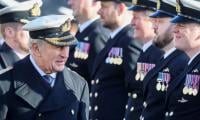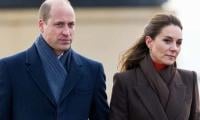The writer holds a PhD from the University of Birmingham, UK and works in Islamabad.
Now coming to Armenia, we see that it was the first officially Christian country in the world when in 301 AD a Christian preacher Gregory persuaded the local Armenian ruler to convert to Christianity. That was 30 years before even Rome became officially Christian. From the 16th to 19th century, eastern Armenia remained under the Persian Safavid dynasty before coming under the Russian control.
In the beginning of the 20th century, nearly half of the population in the Armenian capital, Yerevan, was Muslims who were mostly Azeri. During WWI, when Russia intervened in western Armenia, the local Armenians tried to revolt against the Ottomans prompting them to launch a brutal crackdown which Armenians call a genocide. Western Armenia was under the Turkish rule till the end of the Ottoman Empire. When the Soviet Union came into being in 1922, Armenia, Azerbaijan, and Georgia, remained in a single unit up until 1936 when three separate republics emerged with Armenia as the smallest of the Soviet Republics at that time.
In the Soviet Azerbaijan, there was an enclave of Armenian majority area called Nagorno-Karabakh that has remained a bone of contention for decades, even during the communist rule. In the past 100 years or so, the most prominent Soviet leader from Armenia was Mikoyan; a close comrade of Stalin and one of his deputy PMs from 1946. After Stalin, the new Soviet leader Malenkov kept Mikoyan as minister for trade; and then Khrushchev also retained him as his first deputy PM. In 1964 when Khrushchev was removed by the party itself, Brezhnev was the ceremonial head of state as the chairman of the Supreme Soviet.
Khrushchev was PM and party secretary; against him a group revolted that included Mikoyan. That’s how Comrade Mikoyan from Armenia became the new head of state in the Soviet Union, Brezhnev became the new party chief and Kosygin, new PM. Khrushchev and Mikoyan were both around 70, and perhaps that was one reason Mikoyan could last for just one year as the Soviet head of state and Podgorny replaced him. Now all three new leaders of the Soviet Union – Brezhnev, Kosygin, and Podgorny – were nearly a decade younger than Khrushchev and Mikoyan, and were the first Soviet leaders born in the 20th century.
In the Soviet politics, the most prominent Ukrainian name was Podgorny, Byelorussian was Gromyko, and Armenian was Mikoyan. From Azerbaijan, Aliyev was the most significant name in the past 100 years, as his family has been in power for over half a century now. When I was in Azerbaijan in 1986-87, the communist rule started crumbling. Gorbachev first dismissed the Kazakh Party chief in 1986 triggering protests in Kazakhstan and then also removed Aliyev from his position as deputy PM and Politburo member in 1987. The same year the Soviet Union was celebrating 70th anniversary of the revolution marred by the defection of Yeltsin – the party chief in Moscow.
In 1988, the conflict in Nagorno-Karabakh resurfaced when it started demanding its separation from Azerbaijan. In March 1988, there were widespread riots in Sumgait, a city of Azerbaijan in which rioters killed dozens of Armenians and burned their homes. Amid increasing troubles in May 1988, Gorbachev removed party leaders in both Armenia and Azerbaijan. Abdurrahman Vazirov took over as new party head in Azerbaijan. Those who kept an eye on Pak-Soviet relations may recall that Vazirov was the Soviet ambassador to Pakistan for two years in the 1980s. That was the time when a Popular Front emerged in Azerbaijan whose leader was a scholar of Arabic, Abulfaz Elchibey.
The Soviet government placed Nagorno-Karabakh under the direct control of Moscow but in 1989 the supreme soviet of Armenia announced the annexation of the disputed area into Armenia. At that time the population of Nagorno-Karabakh was hardly two hundred thousand of which early 75 per cent were Armenians; and around fifty thousand Azeri Kurds, and Russians. The Popular Front started demanding independence from the Soviet Union. In January 1990, there was a mass crackdown by the Soviet forces led by defence minister Yazov, which further estranged the Azeris from the USSR.
Amid that Black-January crackdown, Vazirov was replaced by Ayaz Muttalib who became the last leader of the Soviet Azerbaijan. In March 1991, Gorbachev arranged a referendum across the Soviet Union for a new loose federation of sovereign states. Around 75 percent peoples voted in affirmative to keep the Soviet Union as a new confederation-type country, but in August 1991 the old guards in the Soviet Communist Party revolted against Gorbachev. They wanted to halt the process and restore the authority of the central government. The attempt failed and all Soviet republics started announcing their independence from Moscow.
There were quick changes in the regional leaderships. For example, in Armenia, four leaders were replaced in three years. In October 1991, the first presidential elections were held in Armenia and a staunch nationalist Petrosyan became president who led a war against Azerbaijan. Regional communist parties in all republics dissolved themselves or adopted new names; as in Russia itself President Yeltsin had imposed a ban on the Soviet Communist Party. The republics started creating their own armies, and so did Armenia and Azerbaijan which also became independent after the formal dissolution of the Soviet Union in December 1991.
In February 1992, in Nagorno-Karabakh hundreds of Azeri people were massacred near Khojaly by the ethnic Armenian army. The victims were common citizens, unarmed and unprepared. This massacre took place just two months after the dissolution of the Soviet Union. By 1993, the Armenian forces had occupied Nagorno-Karabakh and its surrounding areas. In 1993, the old communist leader Heydar Aliyev was called to be president of Azerbaijan. By the ceasefire in 1994, a land route to Armenia had been established through Azerbaijani areas now occupied by Armenia. Since then Nagorno-Karabakh has been under Armenian control.
Heydar Aliyev ruled over Azerbaijan till his death in 2003. After that, his son Ilham Aliyev has been elected president four times in the past 17 years, the last being in 2018 with a claim of securing over 80 percent votes. Nagorno-Karabakh has been under Armenian control for over 25 years now and is experiencing a new war. Russia has been supporting Armenia all along and keeps a military base there. It is difficult to determine who initiated the current conflict as both are blaming each other. When Azerbaijan declared its independence from the Soviet Union, Pakistan and Turkey were the first countries to recognize it.
Both have kept good relations with Azerbaijan, which is now a secular country with around 10 million people, and it is rich with oil reserves; whereas Armenia has just three million people. Both countries have seen thousands of their people die or get displaced. Azerbaijan is richer and stronger now than it was 25 years back. If Russia stops supporting Armenia, Azerbaijan is in a position to get Nagorno-Karabakh back and liberate its surrounding areas. But Russia will not allow that and if Turkey comes forward in the war, the conflict will escalate further, resulting in more destruction for the region.
Though Pakistan has also announced its support for Azerbaijan, keeping in mind that we could not do much for Kashmir, we are hardly in a position to do anything. It has been over three decades that I left Azerbaijan and have not been there again, but it remains in my memories, mainly thanks to its beautiful and hospitable people. It will be sad to see more bloodshed there.
Perhaps the best solution is for Armenia to abide by the UN resolutions to end its occupation and for Azerbaijan to ensure regional autonomy to Nagorno-Karabakh within Azerbaijan sovereignty.
Concluded
Email: mnazir1964@yahoo.co.uk















